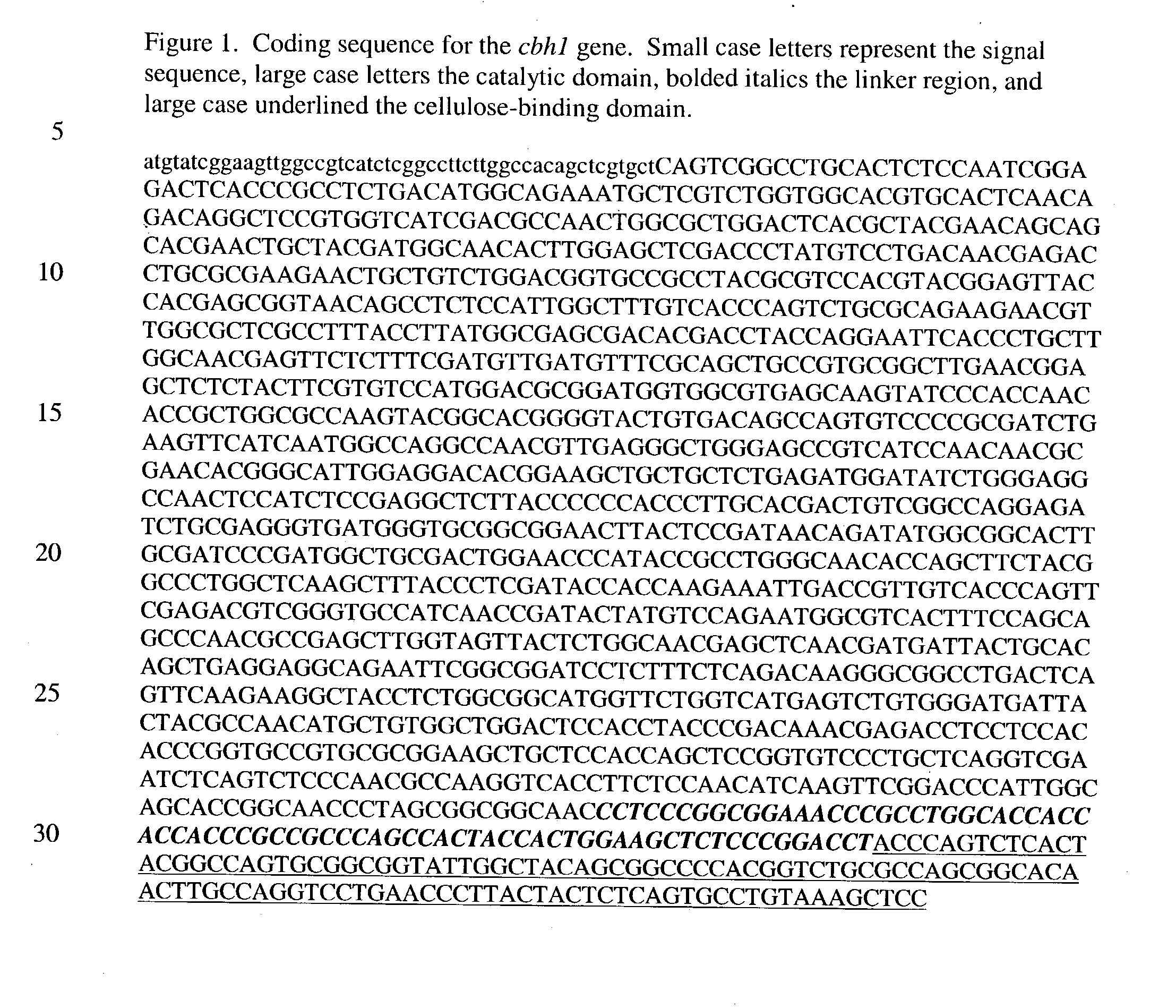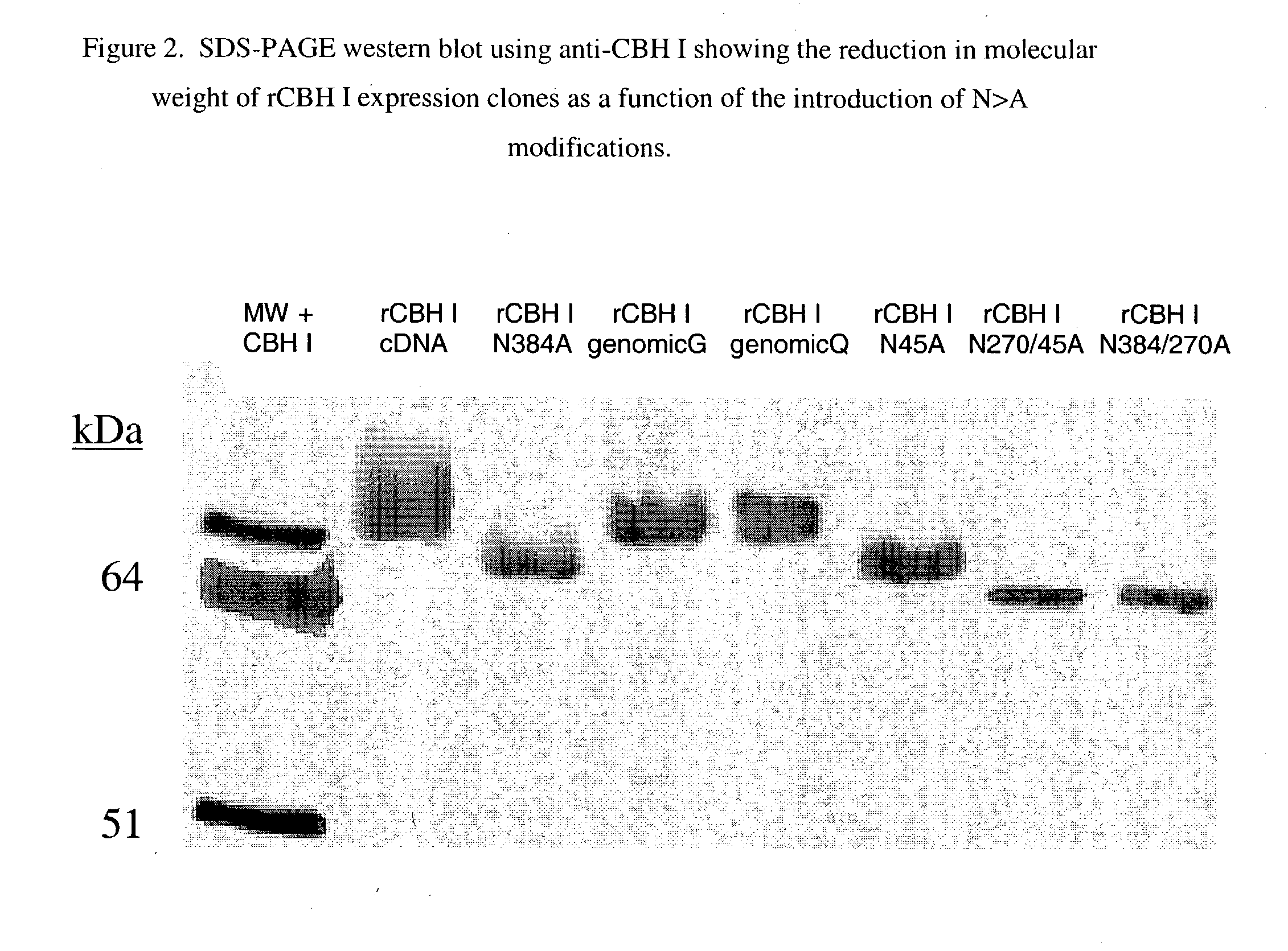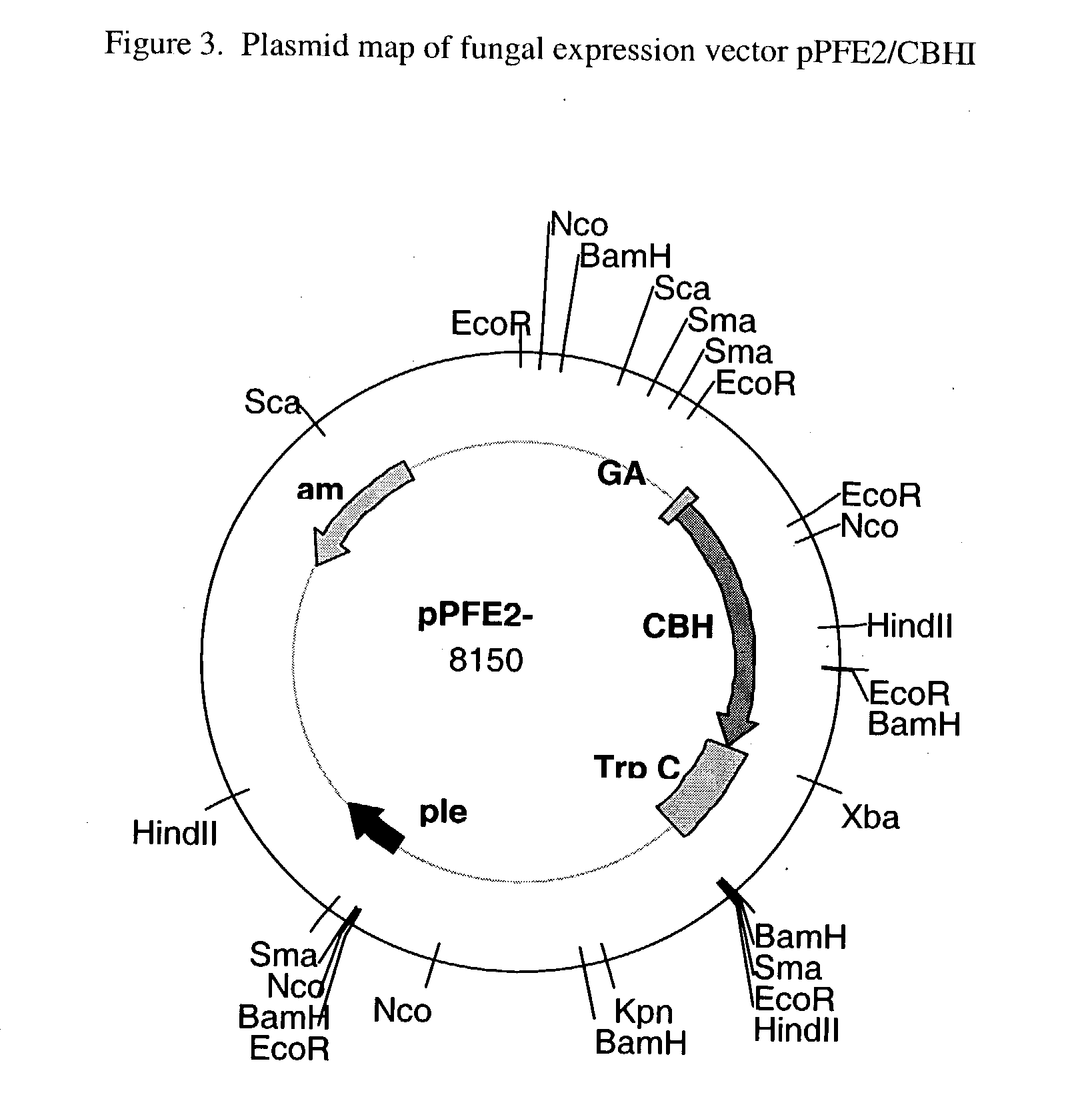Cellobiohydrolase I gene and improved variants
a cellobiohydrolase and gene technology, applied in the field ofvariant cellulase enzymes, can solve problems such as impeded enzymatic activity
- Summary
- Abstract
- Description
- Claims
- Application Information
AI Technical Summary
Benefits of technology
Problems solved by technology
Method used
Image
Examples
example 2
Production of Active Recombinant CBHI (rCBH I) in Aspergillus awamori Construction of the Fungal Expression Vectors pPFE-1 / CBH1 and pPFE-2 / CBH1
[0021] The coding sequence for T. reesei CBH I was successfully inserted and expressed in Aspergillus awamori using the fungal expression vector pPFE2 (and pPFE1). Vectors pPFE1 and pPFE2 are E. coli-Aspergillus shuttle vectors, and contain elements required for maintenance in both hosts. Both pPFE-1 and pPFE-2 vectors direct the expression of a fusion protein with a portion of the glucoamylase gene fused to the gene of interest. The pPFE1 vector contains a region of the glucoamylase gene, with expression under the control of the A. awamori glucoamylase promoter. The protein of interest is expressed as a fusion protein with the secretion signal peptide and 498 amino acids of the catalytic domain of the glucoamylase protein. The majority of the work presented here was done using the pPFE2 expression vector, which was chosen because of its smal...
example 3
Method for Producing PCR Site Directed Mutations for Glycosylation Removal and Improved Thermalstability
[0035] The QuickChange.TM. Site Directed Mutagenesis kit (StrataGene, San Diego, Calif.) was used to generate mutants with targeted amino acid substitutions. To introduce these specific amino acid substitutions, mutagenic primers (between 25 and 45 bases in length) were designed to contain the desired mutation that would result in the targeted amino acid substitution. Pfu DNA polymerase was then used to amplify both strands of the double-stranded vector, which contained the CBH I insertion sequence, with the resultant inclusion of the desired mutation from the synthetic oligonucleotides. Following temperature cycling, the product was treated with the exonuclease Dpn I to digest the parental methylated DNA template and the PCR product was used to transform Epicurian Coli XL1-Blue supercompetent cells.
[0036] The vector pPFE2 / CBHI requires a relatively long PCR reaction (8.2 kB) to m...
example 4
Production of Reduced Glycosylation rCBH I: Sites N270A; N45A; and N384A
[0057] rCHI / pPFE2 has been optimized using site-directed mutagenisis to achieve expression of native molecular weight CBHI in A. awamori by the following ways. The QuickChange SDM kit (Stratagene, San Diego, Calif.) was used to make point mutations, switch amino acids, and delete or insert amino acids in the native cbh1 gene sequence. The Quick Change SDM technique was performed using thermotolerant Pfu DNA polymerase, which replicates both plasmid strands with high fidelity and without displacing the mutant oligonucleotide primers. The procedure used the polymerase chain reaction (PCR) to modify the cloned cbh1 DNA. The basic procedure used a supercoiled double stranded DNA (dsDNA) vector, with the cbh1 gene insert, and two synthetic oligonucleotide primers containing a desired mutation. The oligonucleotide primers, each complimentary to opposite strands of the vector, extend during temperature cycling by means...
PUM
| Property | Measurement | Unit |
|---|---|---|
| temperature | aaaaa | aaaaa |
| concentration | aaaaa | aaaaa |
| pH | aaaaa | aaaaa |
Abstract
Description
Claims
Application Information
 Login to View More
Login to View More - R&D
- Intellectual Property
- Life Sciences
- Materials
- Tech Scout
- Unparalleled Data Quality
- Higher Quality Content
- 60% Fewer Hallucinations
Browse by: Latest US Patents, China's latest patents, Technical Efficacy Thesaurus, Application Domain, Technology Topic, Popular Technical Reports.
© 2025 PatSnap. All rights reserved.Legal|Privacy policy|Modern Slavery Act Transparency Statement|Sitemap|About US| Contact US: help@patsnap.com



